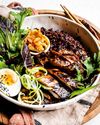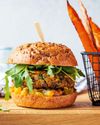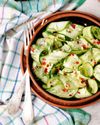We chat with dedicated artisans across the country making jars of aioli with love and care.

Very few ingredients are required to create a culinary masterpiece and aioli is one such testament to that adage. The garlic and oil emulsion is often referred to as “fancy mayo” but when you take the artisan route there’s a very down-to-earth story behind this condiment.
The word aïoli has French Provençal origins, a combination of the words for garlic and oil. Its European history still influences the artisan craft today as a growing number of producers are focusing on wholesome, local and environmentally friendly practices.
A sustainable route
Sustainable production of aioli has resulted in many artisans choosing to make a plant-based product catering perfectly to vegans or those with egg allergies. Dibble Foods, a Sydney-based food company that styles itself as a “purveyor of plant-based foods”, is dedicated to producing game-changing sustainable, and vegan, condiments like aioli.
“I’ve always been obsessed with aioli but after doing some research I quickly realised there weren’t many egg-free/vegan aioli options available or the ones that were on the market didn’t taste as good as egg-based aioli,” explains Dibble Foods founder and director Vuong Nguyen.
“With that in mind, I was determined to make a super tasty aioli that both vegans and non-vegans could enjoy.”
Dibble Foods uses a traditional-meets contemporary process, eschewing eggs for an unlikely substitute often thrown away in food production: aquafaba. In layman’s terms, this is leftover water from cooked chickpeas and it acts as a natural emulsifier.
“I work with local businesses to collect the leftover water from cooked chickpeas and use this instead of eggs,” Nguyen explains. “This is then cultured for a minimum of 24 hours, which helps to develop the egg-like savoury notes in the final product.”
Esta historia es de la edición Issue #25 2019 de Eat Well.
Comience su prueba gratuita de Magzter GOLD de 7 días para acceder a miles de historias premium seleccionadas y a más de 9,000 revistas y periódicos.
Ya eres suscriptor ? Conectar
Esta historia es de la edición Issue #25 2019 de Eat Well.
Comience su prueba gratuita de Magzter GOLD de 7 días para acceder a miles de historias premium seleccionadas y a más de 9,000 revistas y periódicos.
Ya eres suscriptor? Conectar

ARE YOU TO FU enough?
Love it or hate it, everyone has an opinion about tofu. Tofu is a very popular plant-based protein for vegans and vegetarians, but now this humble bean curd is starting to shine for meat lovers too as an alternative source of protein.

Sweet TRAYBAKES
Whether you want to feed a group of people or make a batch of treats for the week, traybaking is a no-fuss way to cook up something sweet and easy that will please everyone. Your family and friends will love you when you offer them some of our: cinnamon scrolls; fruity chocolate; espresso brownies; lemon & coconut slice; or ginger cake with brown butter frosting.

ROLL UP
When you roll food, whether in Lebanese bread, a thin pancake or whatever you choose, you can create a parcel of nutrition that is perfectly suited to your own tastes and needs. Here are some roll-up recipes that will suit every occasion including: mango, snow pea, & sprout rice paper rolls; oat crepes with coconut yoghurt & mixed berries; or beef meatball & tzatziki flatbreads.

RICE BOWL Lunches
If you are working from home, or even enjoying your weekend, and lunchtime rolls around but you have no plans for lunch, then a rice bowl is an ideal saviour.

PLANT-BASED PIES
Pies are a piece of gastronomic brilliance: a filling with a case and lid you can eat is food genius. The first pies date back to Egyptian times and there is a recipe for chicken pie that was carved into stone more than 4000 years ago. For millennia, however, the pie casing was mostly used to cook the filling, but for around 500 years or more we have been eating the pie crust too.

20 FOOD CRAVING HACKS
Decipher the deeper causes of your cravings and discover tricks to curtail them.

Eggplant (Solanum melongena L)
Eggplant is a wonderful option for vegans and vegetarians, extremely nutritious and highly versatile in the kitchen.

5 PANTRY SAVIOURS
Whether you're cooking a simple breakfast or something more exotic, here are five pantry food staples you should have on hand to cook plenty of delicious meals in the comfort of your own home.

Cucumber (Cucumis sativus)
Cucumbers are delicious fresh but they also offer plenty more options in the kitchen.

Our Chefs
Meet the chefs who bring this issue's recipes to you: Lisa Guy, Georgia Harding, Lee Holmes, Sammy Jones, Raquel Neofit, Naomi Sherman and Ames Starr.